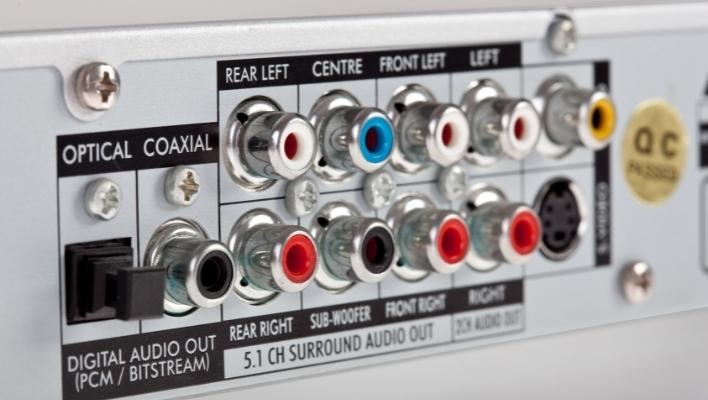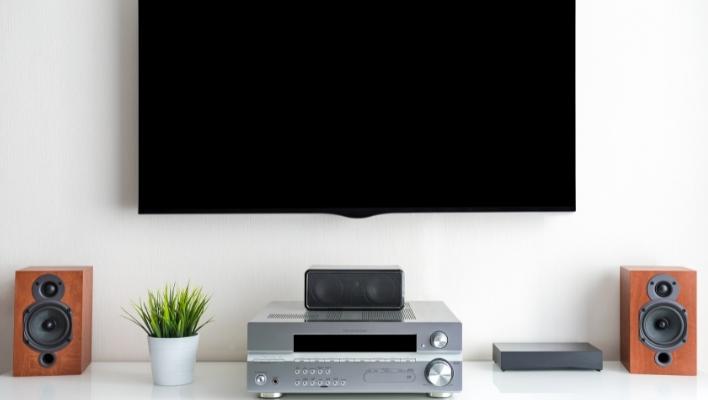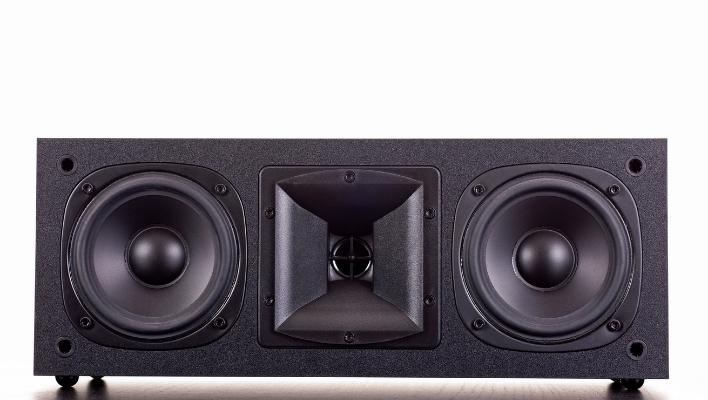The center channel plays an integral part of every home theater system as it is the first place you direct dialogue and ambient sounds when listening to music. This may seem tedious, but since your ears are naturally attuned to the middle frequencies, it can be jarring when you lose this natural balance caused by a poorly placed front channels (left and right speakers) or subwoofer.
This article covers the working principle of a center channel in a surround sound setup, how it affects music listening, and finding the correct center speaker for your needs.
What is a Center Channel Speaker?
Have you ever wondered what it would be like to enjoy your favorite music on a channel stereo in this speaker? A center channel speaker gets placed in the mid of your home theater system. It adds depth and clarity to the sound by providing an even, high-quality frequency response throughout the entire room.

It also directs dialogue, sound effects, and other essential sounds towards you, so you don’t miss any of the action! Like glue, the center channel ties everything together and makes it sound more cohesive.
How Important is a Center Channel Speaker?
It’s not just about having a good sound for music. It’s also about hearing what people are saying on-screen clearly! The center channel speaker is usually positioned above or below the TV screen and directly between the left and right speakers to pick up dialogue in both directions.
The best way to understand how a center channel works is by listening to the difference between using one in your home theater system and not using one. When you lack a center channel speaker, you’ll notice that sound tends to be very flat—meaning that everything sounds like it’s coming from the same spot on your screen.
However, with a center channel speaker, you’ll notice that everything sounds much more realistic because it has depth and dimension. It makes things feel like they’re happening around you instead of being projected straight at your face!
Fortunately, it’s possible to use a center channel speaker as an all-in-one solution for your home theater setup. So if you’re looking for something simpler than a full-range sound system but still want to get great sound out of your TV or projection screen, this speaker system might be a viable option.
Lastly, suppose you’re using an AV receiver with Dolby Atmos capabilities. In that case, you’ll have to ensure that the center channel gets its dedicated power supply to handle all of those channels without losing any quality in the center channel sounds.

How to Choose Your Center Channel
The main thing that isolates a good center speaker from a bad one is its ability to handle high frequencies (treble) effectively. And deliver voices of musical instruments with clarity and emotionality. So which are the factors to consider when selecting the best center channel speaker that meets your home entertainment needs?
Price
When choosing a center channel speaker, always decide how much money you want to spend on it. If you can afford to chip more into your pocket, it’s best to go for a higher quality speaker with better technology, such as DTS-X or Dolby Atmos surround sound. These technologies will deliver a more detailed sound quality than the lower-priced ones.
Size
The next thing that needs consideration before buying any new equipment like this one today is size! You’ll want something small enough not to fit in the available space while still delivering the much-needed quality. For instance, a small center channel speaker may not fill a large room with punchy sounds like it would in a small space.
Compatibility
Always make sure that the center channel speaker you buy is compatible with all of your other components—especially if those components are from different brands! Imagine how disappointing it would be if you purchased a new TV only to realize that its HDMI ports won’t work with your old receiver’s HDMI inputs.
Frequency Response
When shopping for speakers, ensure you get one with a high-frequency response (20kHz or higher). This ensures that you can hear high-pitched noises like giggling or whispering without problems.
Impedance
Impedance refers to how much power the center channel speaker needs. Therefore, if you have an amp with high impedance—meaning it takes more electricity– you’ll have to ensure that your speakers have low impedance.
Timbre Matching
Timbre matching is choosing surround speaker components with similar tonal quality and frequency response. If your center channel has a “sound signature” different from other speakers in your system, it can throw off your listening experience. Therefore, find center channels that match the existing speakers in your home theater entertainment system, and you’ll enjoy listening to music or watching movies with the full sound they deserve!
Pros
- Crisp, clear sound
- Great for dialogue
- You can direct sound to where you want it to be
- It makes your room look less cluttered
- A perfect alternative to bookshelf speakers
- More immersive sound experience for all listening positions
- Reduces the need for multiple speakers
Cons
- Costly than some powerful bookshelf speakers on the market
- Not very effective in large spaces

Final Verdict
So, as you can see, a center channel speaker is one of the most significant speakers in your home theater system. It serves a very vital function by providing crucial dialogue between characters on the screen so that you can follow what is happening with the story. And when it comes to music, the center channel provides even more clarity and detail to otherwise less defined parts of music.
